'The nation is watching us': RI got millions in opioid settlement. Here's how it's spent.
PROVIDENCE – Recovery from a substance-use disorder is an imperfect process, fraught with pitfalls and relapses.
Knowing that, Lisa Peterson conceived of a program to capture Rhode Islanders kicked out of treatment for drug-seeking behavior, or who overdose and land in the hospital.
Rather than returning to the streets, or to the environment that led them to relapse, people will have a new option: Safe Landings, a short-term residency program expected to open in the coming months at 166 Pawtucket Ave. in Pawtucket.
“Essentially, we don’t care when your last use was, as long as you're safe,” said Peterson, the chief operating officer at VICTA, an addiction treatment center that provides substance-use, mental health, and primary-care services in Providence.
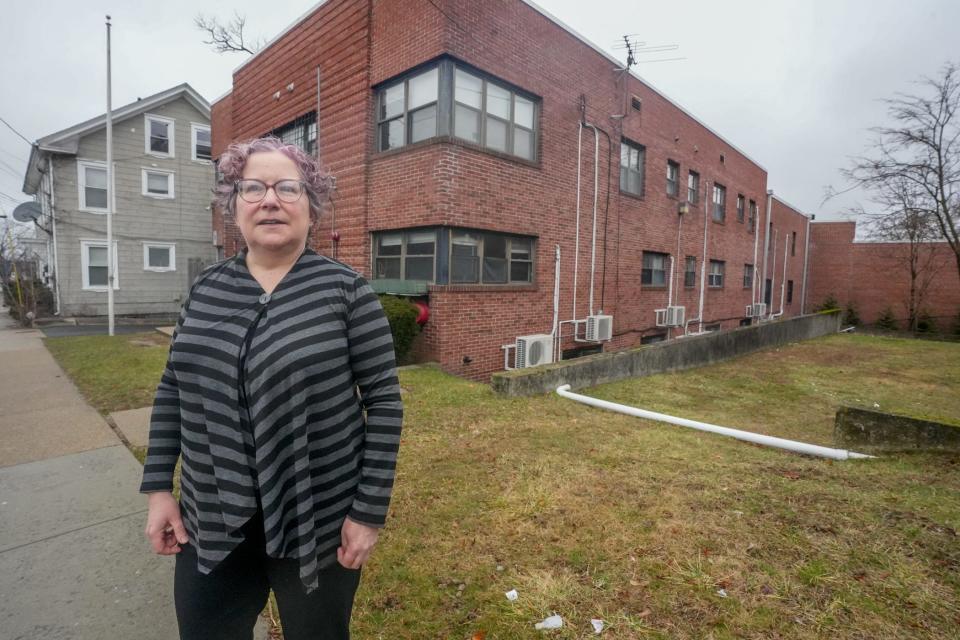
With 10 beds, the program will serve as a landing spot for people as they consider the next steps in their recovery, with peer-recovery specialists and help securing housing, a job or even a treatment bed. It's being supported by $350,000 from the state's opioid settlement money.
“Our model is going to be more of restorative justice. Our goal is the safety of the community," Peterson said. "We expect people to have symptoms of the illness they’re seeking treatment for.”
So far, $30M from opioid settlement funds have been spent
Safe Landings is just one of the new initiatives launching across Rhode Island as a result of the estimated $300 million the state will recoup over time from settlements resulting from a lawsuit against manufacturers and distributors of prescription opioid painkillers. Under then-Attorney General Peter Kilmartin, the state sought to hold companies liable for damages resulting from the opioid crisis, including skyrocketing accidental overdose deaths and opioid prescriptions that exceeded the national average.
The settlements are split 80%-20% between the state and municipalities, respectively.
In the last two fiscal years, more than $30 million from the opioid settlement funds has been spent by the state.
How does the state decide who gets money?
Distribution of the state's settlement money is overseen by the Executive Office of Health and Human Services, working with the Opioid Settlement Advisory Committee. Here's how it works:
Settlement money must be used to expand access to opioid use disorder prevention, intervention, treatment and recovery.
A 17-member committee, made up of state and municipal representatives and experts, works with stakeholders in the treatment and recovery arena.
The committee makes suggestions to Richard Charest, secretary of the Executive Office of Health and Human Services.
If Charest accepts a recommendation, it goes to lawmakers and the governor for inclusion in the state budget.
“I think the important thing is that we keep getting input from the community about what they’re thinking about and what they’re seeing on the ground,” said Marti Rosenberg, director of policy, planning and research at the state Executive Office of Health and Human Services. “We will continue to use that public input process to make decisions about how the settlement dollars should be spent.”
The process follows principles established by Johns Hopkins University to avoid the snags seen in earlier tobacco settlements, when very few dollars went to health care. These are the principles:
That the money be spent to save lives.
That the state rely on evidence to guide spending.
That investments be made in youth prevention.
That the focus is on racial equity.
And that spending decisions be guided by a fair and transparent process.
How RI's first-of-its-kind overdose prevention center will work
One of the largest allotments – $3.25 million – will go to opening an overdose prevention center at 45 Willard Ave., near the Rhode Island Hospital campus in Providence. Project Weber/RENEW and VICTA are teaming up to create space for people to safely use illicit drugs under oversight with the goal of edging people toward treatment.
VICTA will have medical providers, nurses and counselors onsite to provide access to services as soon as an individual is ready for treatment.
In 2021, Rhode Island became the first state in the nation to authorize overdose prevention centers.
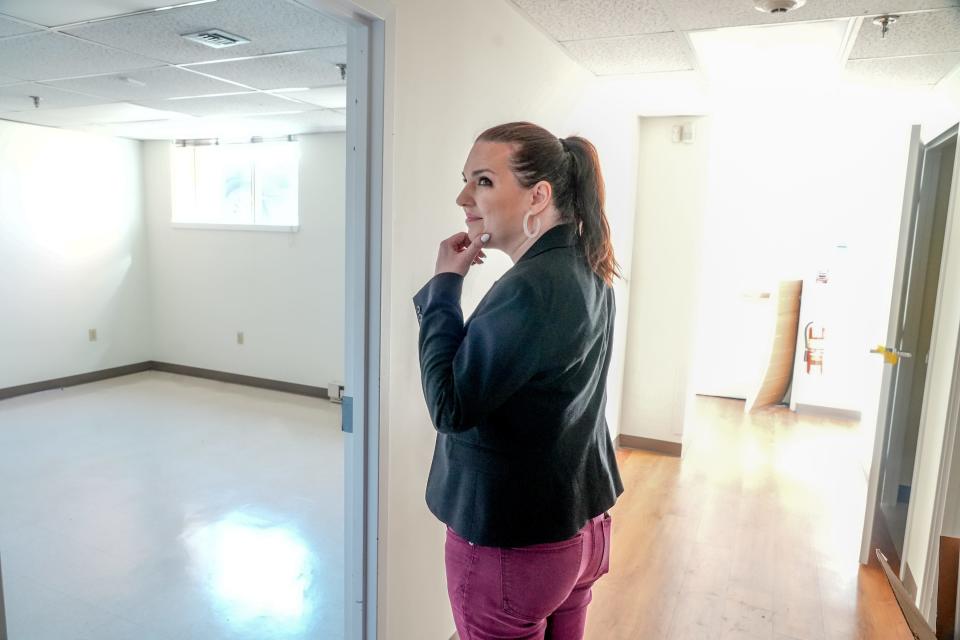
The three-story brick building is right off Eddy Street, an easy walk to nearby hospitals and just off a bus line. It used to house Care New England’s executive offices.
“The location is wonderful,” Colleen Daley Ndoye, executive director of Project Weber/RENEW, said on a recent tour.
With the space coming together, here's how it will look inside:
Project Weber/RENEW’s drop-in center, now at 640 Broad St., will move to the first floor, along with VICTA’s medical offices and a pharmacy.
The overdose prevention center will be a secure site on the second floor so that people in recovery, or even considering treatment, will not be exposed to people actively using substances.
The prevention center is spacious, with a U-shaped desk so managers can keep an eye on clients and be ready to intervene.
There will be one staff member per four occupants, with the center serving a maximum of 16 people at one time.
It will be open on weekdays to start.
Easing people into treatment in the quiet moments
“They trust us, so they’ll open up to us,” overdose prevention center director Dennis Bailer said. “In those quiet moments, they say this isn’t the life I want to live.”
It’s then that the center hopes to ease people into treatment.
“We’re trying to keep people as safe and healthy as possible,” Ndoye said.
Two overdose prevention centers were launched on Nov. 30, 2021, in New York City. According to the Cato Institute, those centers have averted 1,008 overdoses and served 3,700 participants nearly 84,000 times.
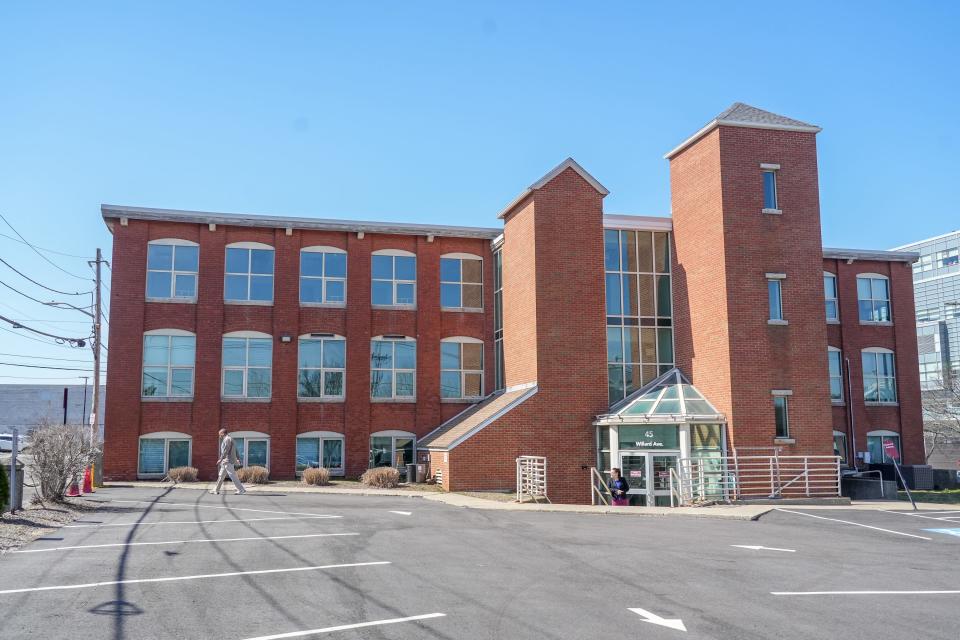
“We can intervene immediately,” and cut down on rescue runs for overdoses, said Bailer, who will be co-director of the center with Project Weber/RENEW deputy director Ashley Perry.
In 2022, Rhode Island experienced a record 436 accidental overdose deaths, 323 of which involved fentanyl.
Project Weber/RENEW continues to raise money to support the center, which is expected to open this fall.
“The nation is watching us,” Ndoye said.
How else is the money being spent?
In addition to Safe Landings and the overdose prevention center, the state has:
Added 82 treatment beds through contracts handled by the Department of Behavioral Healthcare, Developmental Disabilities & Hospitals. Zinnia Health, Galilee Mission and Bridgemark Addiction Recovery Services all received a share of $1,057,827.
Expanded its partnership with the Rhode Island Foundation to create a new grant program with $1 million for trauma support for peer specialists and first responders to help them combat post-traumatic stress disorder symptoms and burnout.
Will spend $3.3 million in the coming two years on housing support projects focused on equity, landlord incentives for priority populations, and providing subsidies for people with a substance-use disorder.
Awarded $526,492 to Westbay Community Action for homelessness prevention services; Hallworth House Medical Respite, a program that cares for people who are experiencing housing insecurity or homelessness and have acute injuries and illnesses; and support for a mobile trauma-informed wound care project to address the impact of the animal tranquilizer xylazine in the illicit drug supply.
Awarded $50,000 apiece to six recovery centers, five mobile outreach operations and other support organizations to help meet people's basic needs, including clothing, food, transportation vouchers and equipment, such as tents.
Allocated $1.5 million to four agencies to provide mobile outreach and harm-reduction measures, such as supplying naloxone, clean needles, fentanyl test strips and other materials, as well treatment and recovery support. Those organizations include Project Weber/RENEW, the Parent Support Network, AIDS Care Ocean State and Community Care Alliance.
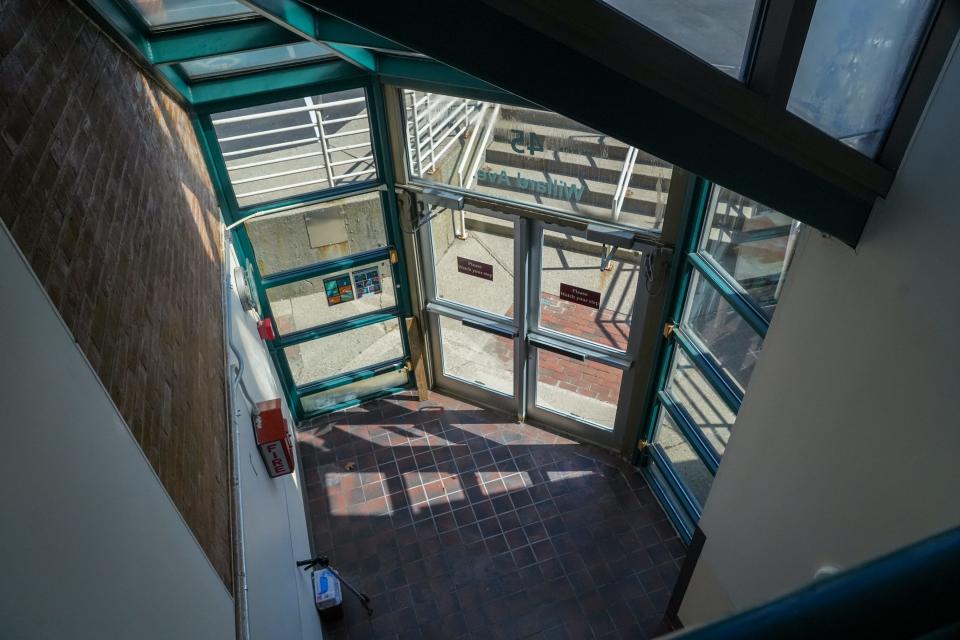
Millions going to school-based interventions
The state has allotted more than $4 million for school-based services, with $2.3 million going to Coastline EAP for its program to prevent and reduce substance use among students ages 12 to 18.
Another $2.5 million is going to a grant program through the Rhode Island Foundation to create community-based youth prevention programs.
These equity-focused programs will also get funding
The Health Department is providing $1.25 million to several agencies to carry out mobile outreach to communities of color, which are at higher risk for fatal overdoses.
$525,000 is being dedicated to Building Futures to develop a recovery community within the construction industry, with a focus on workers of color. The program is encouraging treatment and developing an intervention strategy with unions and employers in Rhode Island.
The Executive Office of Health and Human Services wants community input to allocate $300,000 this fiscal year to address health disparities associated with Rhode Island’s overdose crisis. Data show significant racial and ethnic disparities in fatal overdoses, treatment access and other services in Rhode Island.
The Health Department received $620,000 to upgrade its surveillance and data collection systems.
The state will build out its tracking mechanisms going forward to gauge the effectiveness and reach of the initiatives. The results will be posted on a public dashboard at PreventOverdoseRI.org this year.
“We need to figure out what works and what we need to sustain,” Rosenberg, of the Executive Office of Health and Human Services, said.
What comes next?
“What we want to do is change things,” said Linda Mahoney, program administrator of behavioral health/substance use conditions at BHDDH.
Expanding recovery housing options is a critical next step, she said.
“People on the recovery side don’t have a place to live,” Mahoney said. “That’s our next goal.”
Plus, providers of recovery housing face obstacles, such as discrimination against people with substance-use disorders, as well as low Medicaid reimbursement rates in Rhode Island, that make it hard to stay afloat.
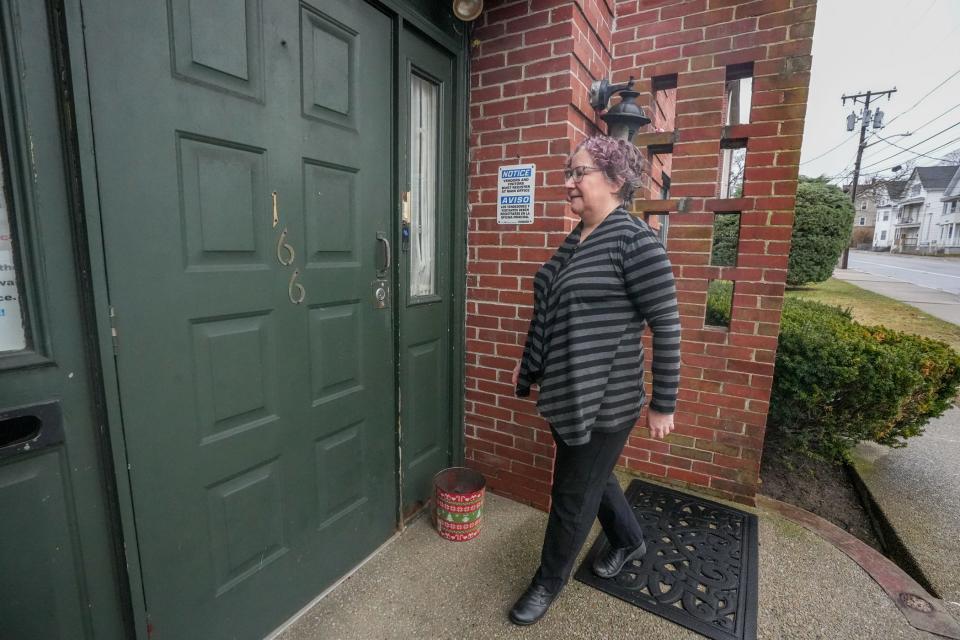
“These are people who want to live a better life,” Mahoney said.
The settlement money is a game-changer in Rhode Island, she said.
“We started turning it out almost immediately. This money is for long-term system change,” she said. ”It’s coming right from the community. The community is screaming, this is what we need.”
For his part, Thomas Joyce, director of East Bay Recovery Center and co-chair of the Governor’s Overdose Prevention and Intervention Task Force, wants to see more money dedicated to treatment and long-term recovery. He observed that $2.7 million is going to governance.
"I would like to see more parity," Joyce said. "We need to look at the continuum of care. Once they're out of treatment, how do we continue to support them?"
Upping the state's Medicaid reimbursements seen as crucial
Increasing Medicaid reimbursement rates is absolutely crucial to the state’s use of the settlement money, according to Rosenberg, of the Executive Office of Health and Human Services, and others.
“We know that the increase in rates introduced by the governor … should really help,” Rosenberg said. “They can get the infrastructure dollars, but if the rates don’t support the ongoing provision of services, the providers have expressed that that’s a problem. We really look at rate increases to go hand-in-hand with the infrastructure dollars.”
Peterson, of VICTA, agrees that the rates must be hiked.
“The reimbursement rate is really, really poor,” she said. “Everyone agrees that it’s absolutely necessary. Hopefully, this will be the year.”
“I want to pay my counselors what they’re worth,” she added.
New providers will need to think outside the box
The state is looking to broaden its reach in the years ahead. A request-for-proposals was put out earlier this year for recovery housing for gender-diverse, family-focused and LGBTQ+ people, but there were no responses, according to spokesman Randal Edgar.
There are approximately 400 recovery housing beds for men and 125 for women under contract with the state. There are nearly three times more beds for men, because women are less likely to seek recovery housing, often because they cannot bring children.
The state has reposted the request for women’s residential treatment and plans to issue another for recovery housing.
“I need new players. I really need new providers to think outside of the box,” Mahoney said.
Mahoney remains optimistic and urges people to call 942-STOP (7867) if they are seeking help with substance use.
“Don’t be afraid to ask for help. There’s a lot more help out there than there was even a year ago,” she said. “People do recover.”
This article originally appeared on The Providence Journal: RI spending opioid settlement on safe injection site, other programs

